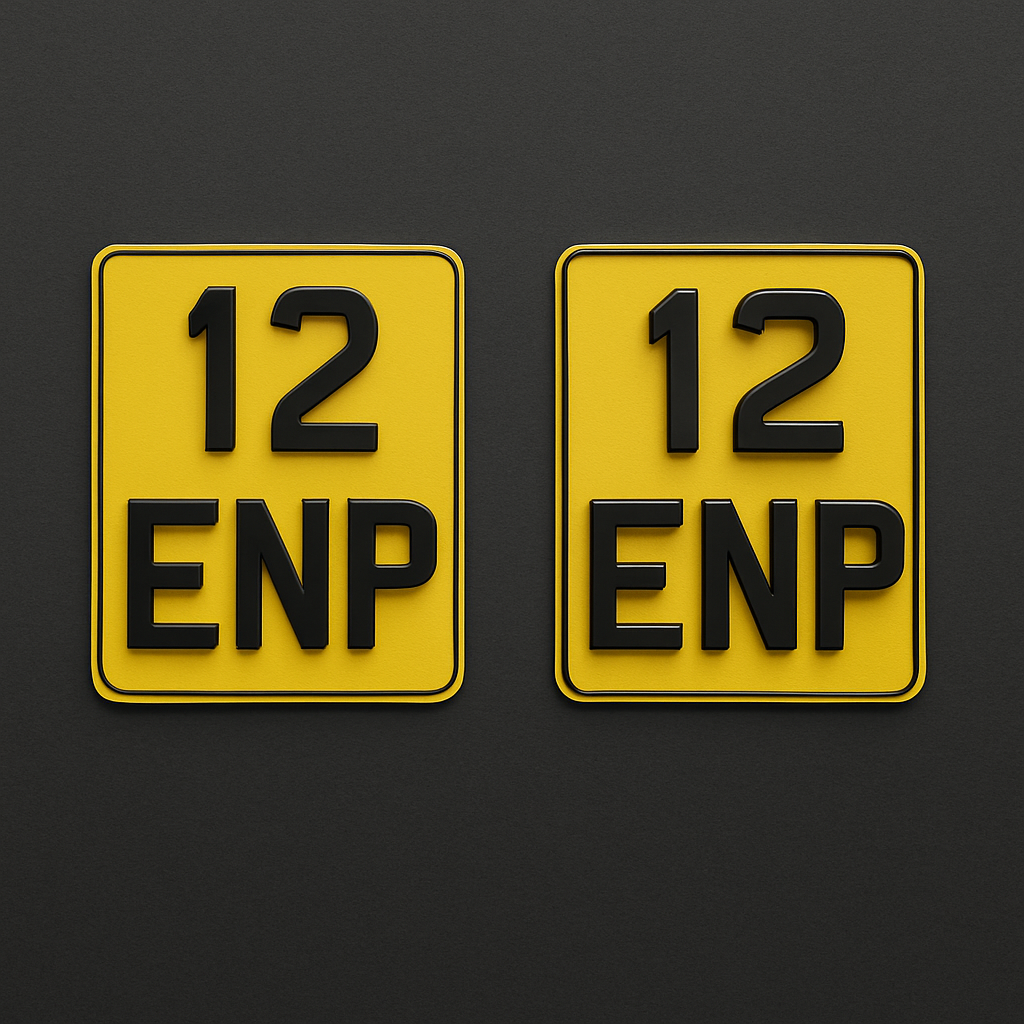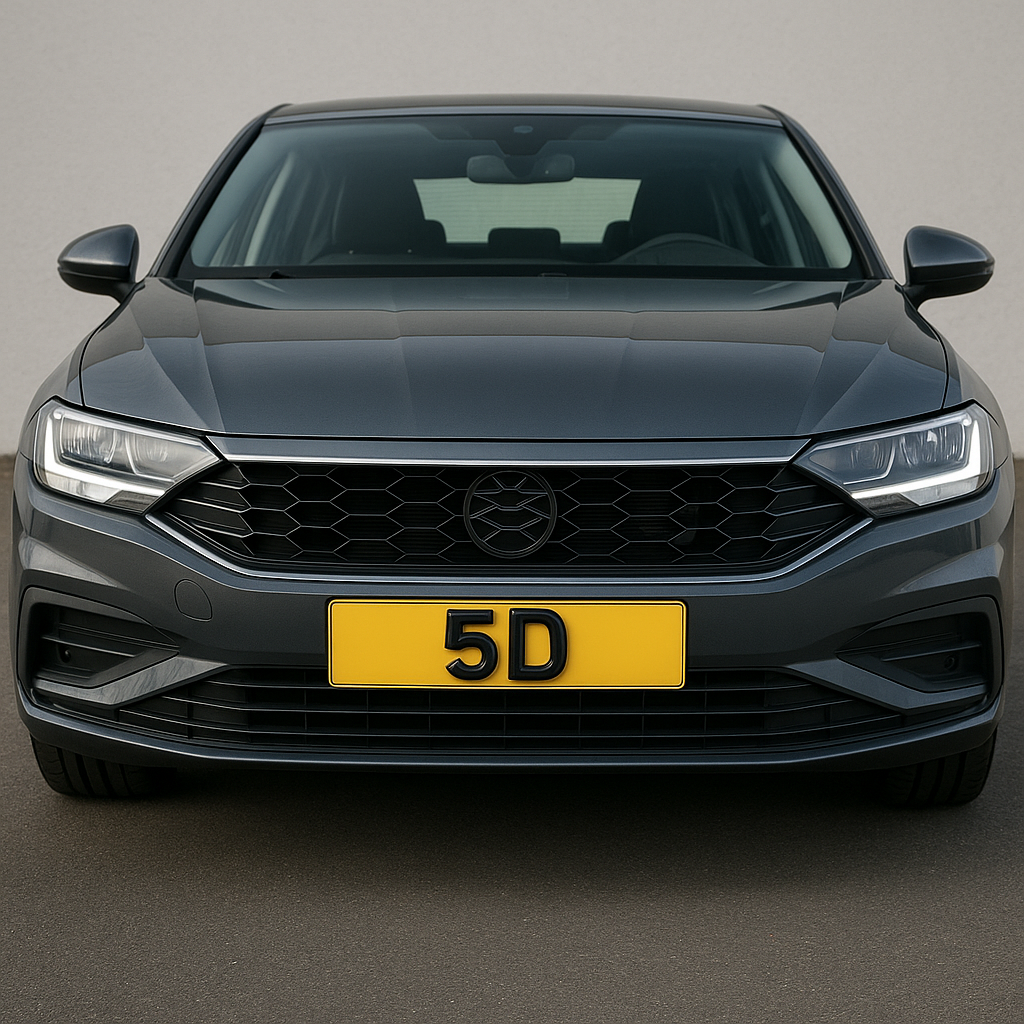Number plates can feel like a small detail — until you realise how much they shape the look of your car. And right now, the difference between 4D and 5D number plates is one of the most searched-for style questions online.
This custom number plates comparison breaks down how each one looks, what they’re made of, and why one might suit your car more than the other. If you’ve seen both 4D number plates UK and 5D number plates UK on the road but aren’t quite sure what sets them apart, you’re not alone.
So, what are 5D number plates, exactly? And how do they compare to 4D plates in terms of depth, gloss, or value? Whether you’re heading to a show or just want cleaner visuals on the daily, we’ll help you decide which one works better for your setup.
Character Style

It’s not just about letters and numbers – the actual style of each character on your plate can seriously change how your car looks from the back or front. Here’s how 4D vs 5D plates compare on that front:
- 4D plates feature solid black acrylic characters
- These have a bold, squared-off look with crisp, laser-cut edges
- They sit raised from the plate surface, giving a chunky, modern finish
- Great if you like a clean, geometric style with a sharp silhouette
- 5D plates take that same raised acrylic layer and add a high-gloss gel overlay
- This creates a deeper, glossier finish with a softer, slightly rounded surface
- The layered effect gives off a more three-dimensional look than 4D alone
- They often catch the light in a way that makes each digit appear more dynamic
In short, 4D gives you a crisp, structured look, while 5D leans into something a bit more sleek and sculpted. Both bring something eye-catching – it just depends on whether you want bold blockiness or a bit of a glossed-over twist.
Depth and Appearance

This is where style and structure come together. 4D plates usually sit around 3mm thick, giving a firm, flat structure with a strong black-on-white contrast. They’re sharp, solid, and very visible.
5D plates add just a touch more depth, often with a gel layer that catches light differently. You’ll spot a smoother silhouette and a sense of visual lift — a sort of floating effect that plays well in sunlight.
If you’re into bolder outlines and definition, 4D is the pick. But if shine matters more than thickness, 5D often looks just that little bit more refined.
Material
Both options start with a tough acrylic base — the difference is in the surface.
4D number plates layer laser-cut acrylic characters on top. There’s no flex, no curve, just clean-cut lettering with a smooth matte texture.
5D number plates are the same at their core, but the resin overlay makes them feel softer to the touch and look shinier. It does, however, need to be applied well — cheaper 5D plates can suffer if that layer lifts or clouds over time.
In short, 4D gives you hard edges and durability, 5D gives you a polished feel with extra care in finish.
Shine and Gloss
The finish is what often seals the deal for most buyers.
4D plates are neat and simple. You’ll get a soft shine under light but nothing too reflective — ideal if you prefer a cleaner, fuss-free appearance.
5D plates are all about sheen. That extra layer reflects light more noticeably, especially in bright weather or under spotlights. At meets or shows, they’ll often stand out just a little more.
Both styles are legal, but if you're chasing a subtle look, 4D plates play it cool. If you like your details to sparkle, 5D brings more of that energy.
Durability
Here’s a quick breakdown of what actually makes a number plate durable, and how both styles hold up:
- Bonding
- 4D plates are acrylic-on-acrylic — rigid and dependable
- 5D plates need strong gel adhesion to stop peeling
- UV Protection
- Both types should include UV resistance
- 5D plates need this more, as gel can fade if left unprotected
- Weather Resistance
- High-grade acrylic resists grit, water, frost and heat
- Poor-quality gel (on 5D) can crack if made cheaply
- Legal Build
- Both need to meet BS AU 145e for road use
Done properly, 4D and 5D plates both last well — just make sure you’re buying from a trusted plate maker who uses quality materials.
Design Options
Whether you're all about clean monochrome or you're leaning towards a bolder trim, both 4D and 5D plates come with a range of styles that let you tweak the look to match your car’s vibe.
Here’s a quick rundown of the most common custom options:
- Trim Colours:
- Black, red, blue, yellow, green, carbon-effect, and reflective neon outlines
- Subtle border detailing or bold high-contrast styles
- Font Styles:
- Standard UK legal font (mandatory)
- Optional tweaks in thickness or spacing — within DVLA rules
- Slight gloss or matte variations, depending on the plate material
- Flag Badges & Side Details:
- Union Jack, St George’s Cross, Welsh Dragon or EU/UK identifiers
- Left-aligned and printed directly onto the acrylic or gel layer
- Plate Shapes & Sizes:
- Standard oblong (front and rear)
- Smaller square formats (popular with imports or custom builds)
- Shortened plates for personalised registrations
What’s legally allowed?
You can go pretty far with customisation, but it has to stay road legal. That means no italic fonts, shadow effects, coloured characters, or altered spacing. All styles must meet DVLA regulations to pass MOT checks and stay compliant with BS AU 145e standards.
Price
Here’s a quick look at what you’re paying for with each type:
Plate Type | Avg Price (Each) | What's Included |
4D | £35–£50 | Raised acrylic, sharp profile |
5D | £45–£65 | Raised acrylic + gloss gel |
So why the extra cost for 5D plates? It comes down to materials and finish. That gel layer needs proper setting, and it's more fiddly to apply than just sticking acrylic on acrylic.
If you're working to a budget, 4D number plates UK options offer standout style at a slightly lower price. They’re clean, strong, and visually punchy. If your goal is shine, depth, and high-end feel, 5D adds polish — literally.
Both are stylish car number plates, giving a more premium edge than standard options. Your final choice? That’s between you, your budget, and your build.
